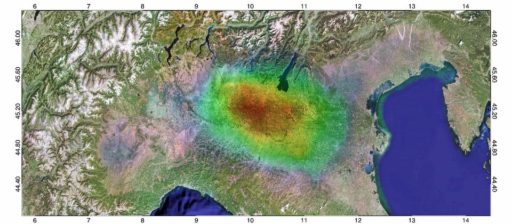The continental nutrient surplus region is set in the Po Valley, an intense livestock region in which the main problems are related to nutrient overload, low nutrient efficiency, ammonia emissions and nitrate leaching.
The basin supports a strong primary production based on livestock breeding (dairy, cattle, and pigs) and the production of crops (maize, rice, ryegrass barley triticale and grain, among others). The problem of ammonia emission is particularly relevant, as the Po Valley has specific orographic and climatic conditions, which does not allow to air pollutants to be dispersed away and can accumulate up to a concentration hazardous to human health.

Both ammonia emissions and nitrate leaching are due to
Mitigation measures were pre-selected basing on previous project and research and they are expected to reduce the above mentioned impacts. In particular:
Anaerobic digestion (AD): AD is a biotechnology that allows the recovery of nutrients to be used in substitution of synthetic mineral fertilisers. In particular, during AD organic nitrogen mineralizes under controlled condition making the digestate a ready-to-use fertiliser. Moreover, AD stabilizes the residual organic matter so that it can be considered as part of the soil carbon turnover, i.e. it does not contribute to NO3– leaching and, N2O and CO2 emissions of fertilised soils.
Precision distribution of digestate by injection device: the precision distribution (GPS and NIR sensors) of ready-to-use fertilisers (digestates) allows the effective distribution in time and space to distribute only the amount of nutrients that are effectively needed by crop, and thus increase plant nutrient use efficiency (NUE) reducing impacts.
Conservative agriculture: the use of minimum ploughing is highly integrated with the previous mitigation measures (AD and digestate injection) and it is intended to limit the disturbance of soil, increasing carbon storage and biodiversity so that soil can become more resilient and self-regulating preserving the productivity (sustainable intensification).
Zeroing mineral fertiliser use: the proper management of digestate allowing high NUE, can support the zeroing of chemical fertilizers use, thus reducing the global input of nutrients in the area and affecting positively in a cascade approach crop production reducing environmental impacts.
More information about this pilot in Italy: University of Milan (UNIMI) – Responsibles: Fabrizio Adani and Giuliana D’Imporzano. Contact for any information: Federico Guglielmo Korner (federico.korner@unimi.it)